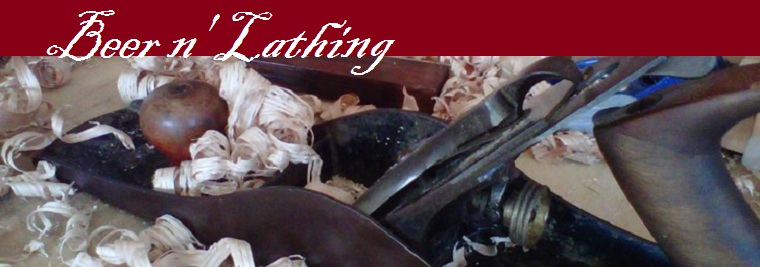I've been using my current workbench for well over a year now, waiting for it to tell me where a holdfast would be beneficial.
I look through the woodwork forums and always see the same bit of advice: "Only install holdfasts where they are needed."
That sound good, but whenever I could use one I found myself inventing some other method to hold my work in place. After the task was over, I simply forgot about the problem and moved on to the next job.
Guess what? You don't NEED a holdfast, like everything else in woodworking, there are multiple ways of getting things done. None of them right or wrong, just differing opinions.
Anyway, I finally got around to adding some holes in the current bench.
My first hand tool workbench in 2010 had holes set 2-inches from the front edge, every 6-inches to accommodate the very small tail vise I had installed. Most of the lumber I used at this time was pre-milled. I had very little use for the multiple holes.
My second workbench, built around 2015, was a design was taken from one of Roy Underhill's books and I followed the holdfast pattern as it had been laid out. I used this work bench mainly at woodworking shows and conferences. I used wedges to hold pieces in place in conjunction with the holdfast.
The "Beast", my current bench, has a worksurface 6-foot long, 26-inches deep and 3-inches thick. It also has a tail vise that sees as much use as the leg vise, not for pinching a work piece to the surface but as an awesome quick-release second vise. I may add that ability in the future, but I get along fine without it.
Searching for advice on where I should place my holdfasts, I located a couple articles written by Schwarz that laid out his favorite locations and the reasoning behind it. I emphatically advise you to search them out for yourself. I used the drawing above as a source on where I wanted to place my holes.
I bored this hole out without once thinking about how close it was to the leg. Luckily, it skimmed the outer edge of the leg, but doesn't stop the holdfast from functioning.
I used my own measurements to lay out the spacing, allowing the holdfasts to overlap slightly in reach.
I've owned these Gramercy holdfasts since bench number one in 2010. Using 3/4-inch holes, they have a 9-inch shaft. Rather short for a holdfast, they are barely long enough to handle the 3-inch work surface. I will probably notch the gripping surface of the holdfasts to improve the grab even more.
The reach is about 7-1/2 inches, so I spaced the holes on the work top to 14-inches on center.
Here are all the highlighted hole locations. Five are located 4-inches from the back edge, these are for use when planning across the grain. The other three are for use with the planning stop, morticing and holding the work piece to the bench hook.
More on the plane stop next time.
Dan.










No comments:
Post a Comment
Let me know what you think! Comments and suggestions are always welcome!